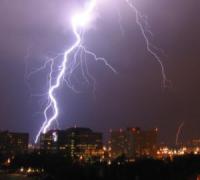When the body is unable to warm itself, serious cold related illnesses and injuries may occur, and permanent tissue damage and death may result. These illnesses can slowly overcome a person who has been chilled by low temperatures, brisk winds, or wet clothing. The result can be frost bite or hypothermia; listed below is information on what happens to the body, and what should be done:
Frost Bite: Freezing in deep layers of skin and tissue; pale, waxy-white skin color; skin becomes hard and numb; usually affects the fingers, hands, toes, feet, ears, and nose.
What Should Be Done: (land temperature)
- Do not leave the person alone; move him/her to a warm dry area.
- DO NOT rub the affected area, because rubbing causes damage to the tissue and skin.
- Remove any wet or tight clothing that may cut off blood flow to the affected area.
- Gently place the affected area in a warm water bath and monitor the water temperature to slowly warm the tissue. Do not pour warm water directly on the affected area because it will warm the tissue too fast, causing tissue damage. Warming takes about 25-40 minutes.
- After the affected area has been warmed, it may become puffy and blister. The affected area may have a burning feeling or numbness. When normal feeling, movement, and skin color have returned, the affected area should be dried and wrapped to keep it warm. Note: if there is a chance the affected area may get cold again, do not warm the skin. If the skin is warmed and then becomes cold again, it will cause severe tissue damage.
- Seek medical attention as soon as possible.
Hypothermia: (Medical Emergency) Normal body temperature (98.6° F) drops to or below 95°F; fatigue or drowsiness; uncontrolled shivering; cool bluish skin; slurred speech, clumsy movements; irritable, irrational or confused behavior.
What Should Be Done: (land temperatures)
- Do not leave person alone; move person to a warm dry area.
- Replace wet clothing with warm, dry clothing or wrap person in blankets.
- Have person drink warm, sweet drinks (sugar water or sports-type drinks), if they are alert. Avoid drinks with caffeine (coffee, tea, or hot chocolate) or alcohol.
- Have person move their arms and legs to create muscle heat. If they cannot do this, place warm bottles or hot packs in the arm pits, groin, neck and head areas. Do Not rub the person’s body or place them in warm water bath. This may stop their heart.
What Should Be Done: (water temperatures)
- Call for emergency help. Body heat is lost up to 25 times faster in water.
- Do Not remove any clothing. Button, zip, buckle, and tighten any collars, cuffs, shoes, and hoods because the layer of trapped water closest to the body provides a layer of insulation that slows the loss of heat. Keep the head out of the water and put on a hat and hood.
- Get out of the water as quickly as possible or climb on anything floating. Do Not attempt to swim unless a floating object or another person can be reached, because swimming or other physical activity uses the body’s heat and reduces survival time by about 50 per cent.
- If getting out of the water is not possible, wait quietly and conserve body heat by folding arms across the chest, keeping thighs together, bending knees, and crossing ankles. If another person is in the water, huddle together with chests held closely.
Hopefully, this will never happen to you or anyone you are with, but this information from OSHA is too important not to pass on.

